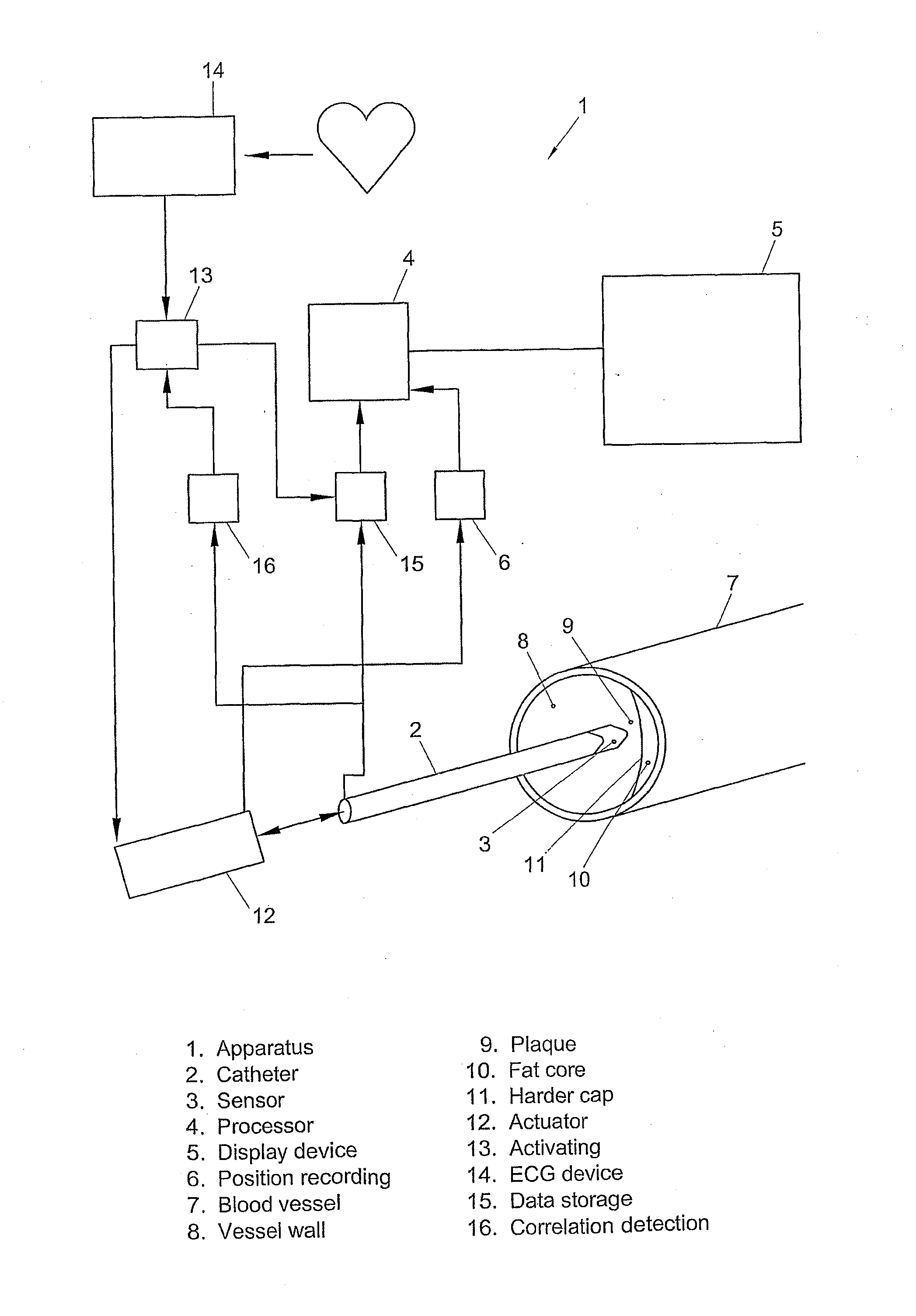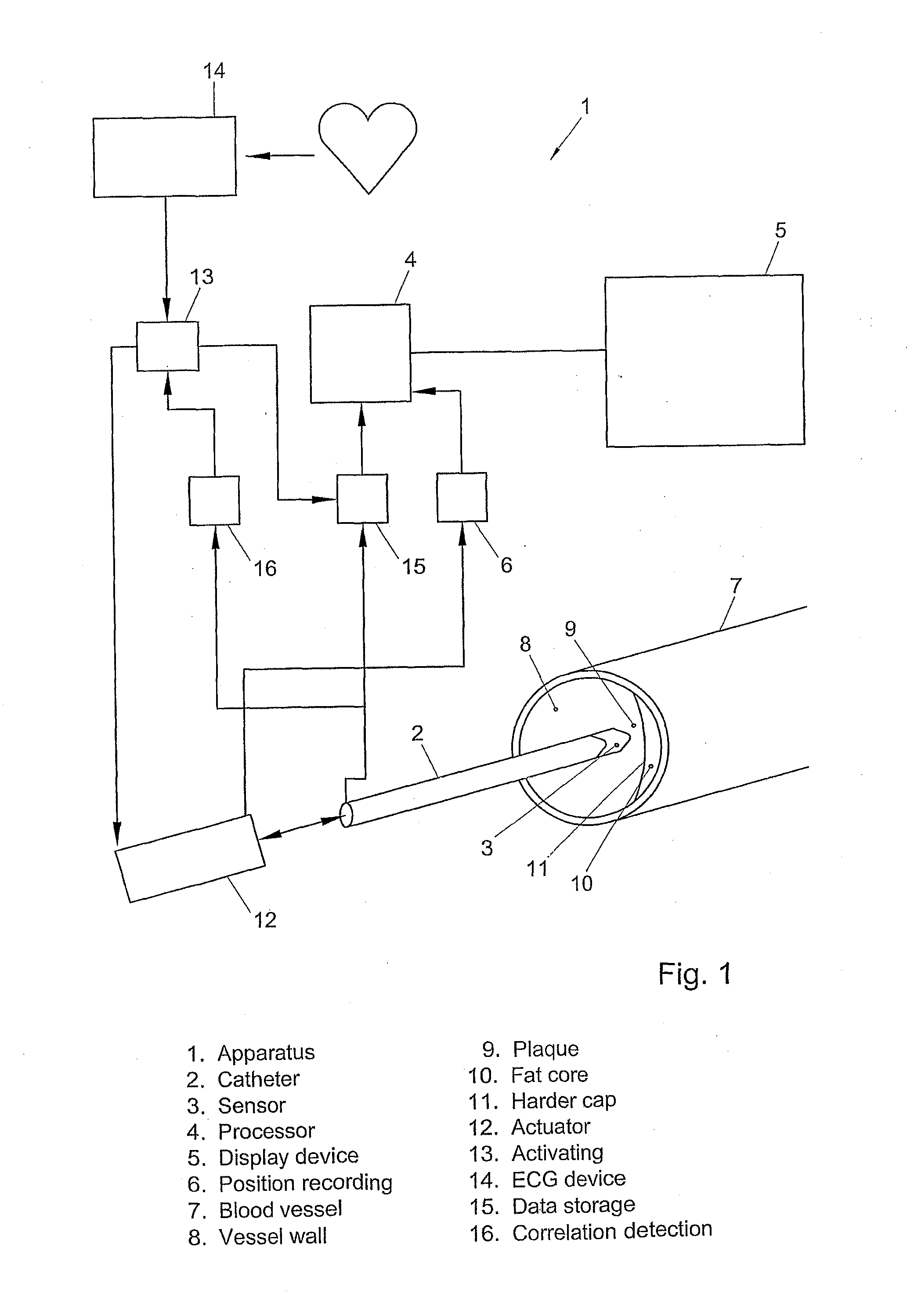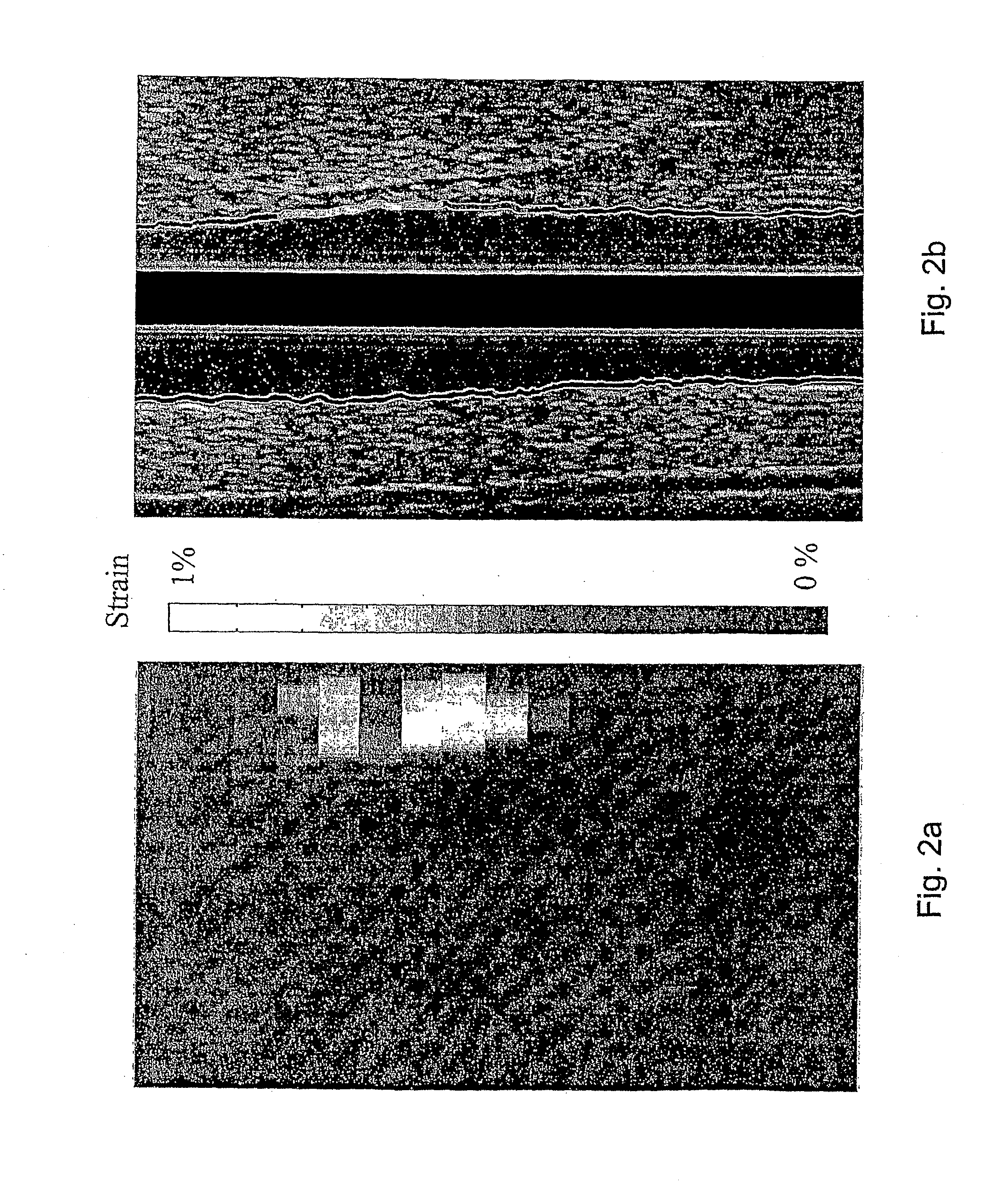Three-Dimensional Tissue Hardness Imaging
a three-dimensional tissue and hardness imaging technology, applied in the field of three-dimensional tissue hardness imaging, can solve the problems of life-threatening thrombosis, difficult reproducible analysis of blood vessels in such a manner, and inability to obtain information from conventional echograms, etc., to achieve the effect of enabling detection of hardness and/or elasticity properties, optimizing correlation between consecutive images, and reducing the negative effect of correlation
- Summary
- Abstract
- Description
- Claims
- Application Information
AI Technical Summary
Benefits of technology
Problems solved by technology
Method used
Image
Examples
Embodiment Construction
[0033]FIG. 1 is a diagrammatic representation of the apparatus 1 according to the invention. This apparatus comprises a movable catheter 2 provided with an acoustic sensor 3. A processor 4 is present to collect and process echographic data; the processor 4 is connected with a display device 5. The processor 4 is further in contact with a position recording means 6 for recording the position of the sensor 3.
[0034]The catheter 2 can be moved through a blood-vessel 7, which blood vessel 7 has a vessel wall 8 deformed by the heartbeat. The deformation can be derived by the processor 4 from the echographic data of the catheter 2 and related to elasticity and / or hardness parameters of the wall 8.
[0035]In explanation, a plaque 9 is shown in the blood vessel 7. This plaque comprises a fat core 10 closed by a harder cap 11. The motion of the catheter 2 is controlled by an actuator 12. The actuator 12 has an adjustable speed of motion, such that the catheter can be moved at a speed of 0.1-2 m...
PUM
 Login to View More
Login to View More Abstract
Description
Claims
Application Information
 Login to View More
Login to View More - R&D
- Intellectual Property
- Life Sciences
- Materials
- Tech Scout
- Unparalleled Data Quality
- Higher Quality Content
- 60% Fewer Hallucinations
Browse by: Latest US Patents, China's latest patents, Technical Efficacy Thesaurus, Application Domain, Technology Topic, Popular Technical Reports.
© 2025 PatSnap. All rights reserved.Legal|Privacy policy|Modern Slavery Act Transparency Statement|Sitemap|About US| Contact US: help@patsnap.com



